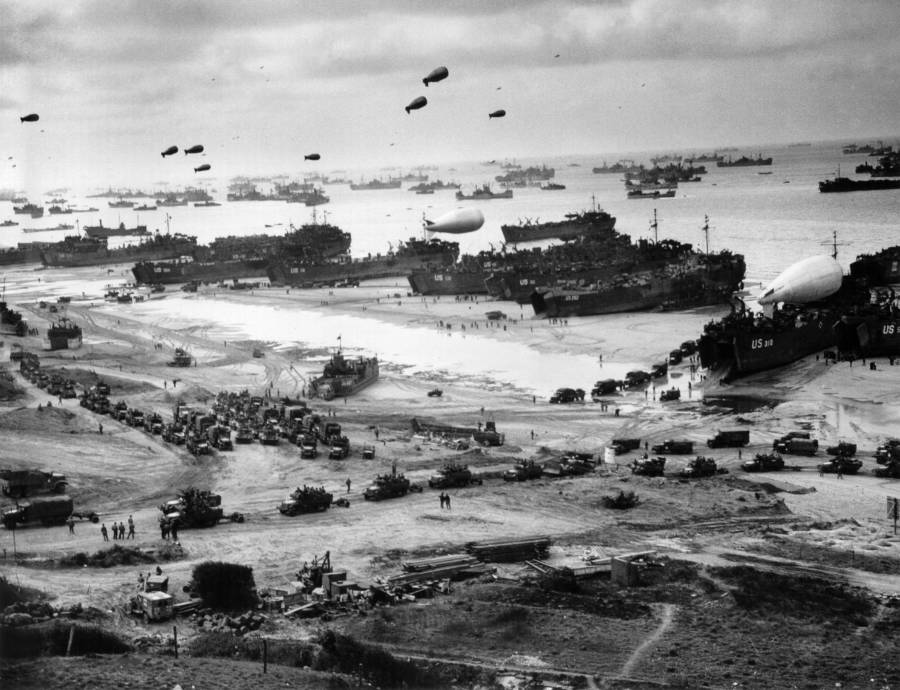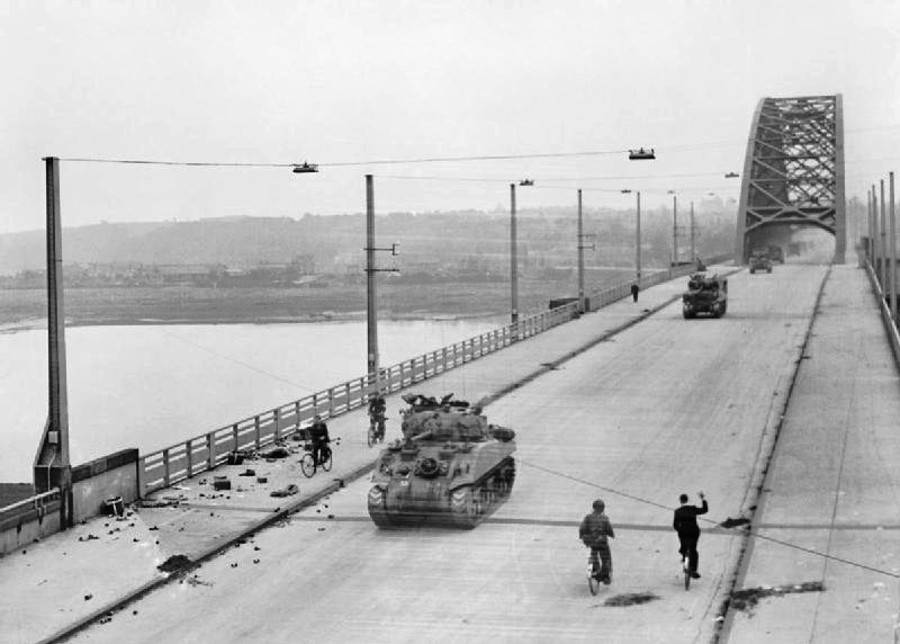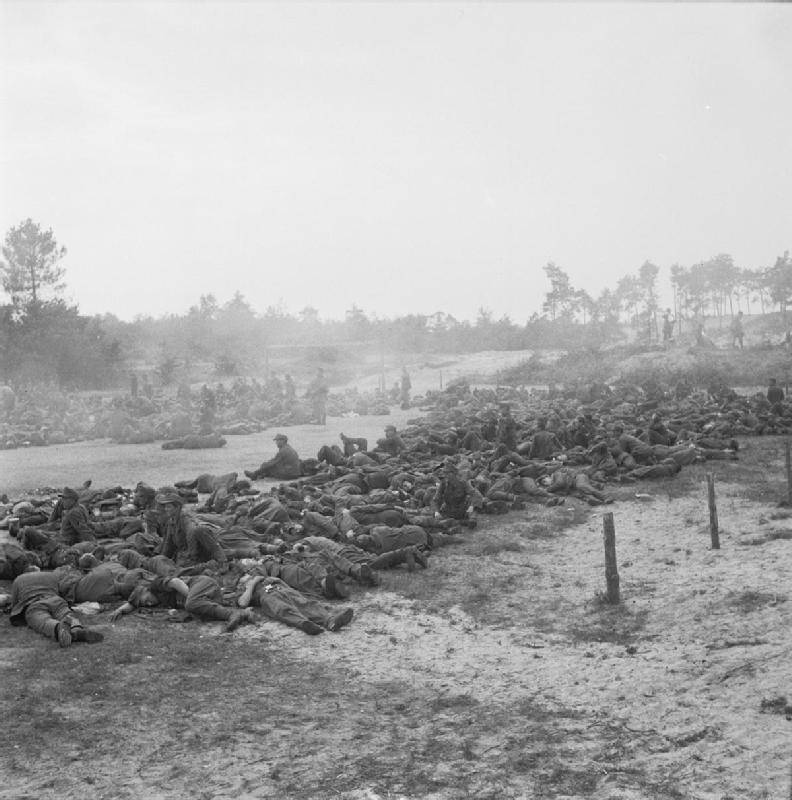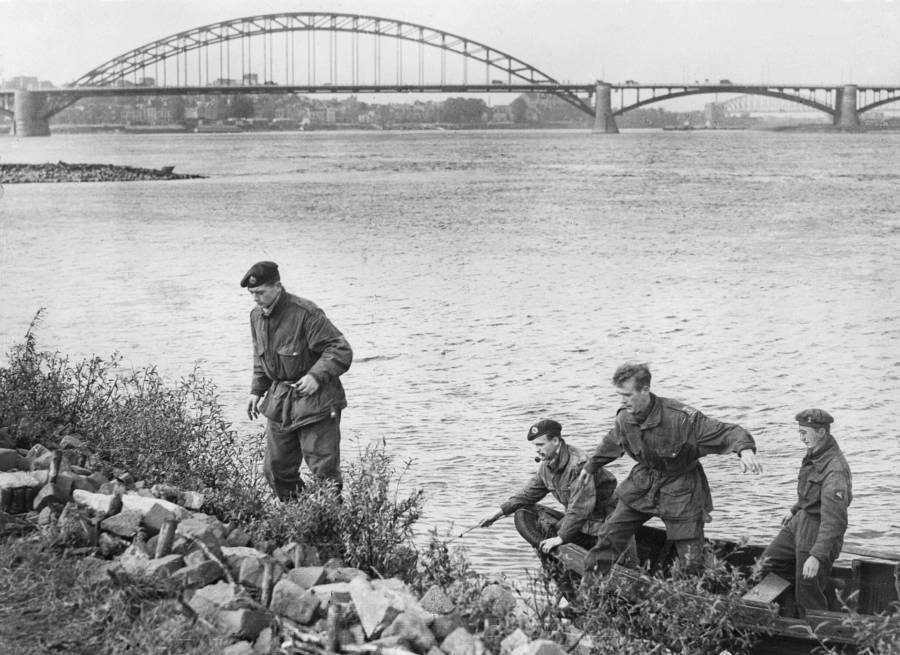In 1944, the Allies seemed to have the upper hand in the war — until they attempted to take three cities at once from the Germans in Operation Market Garden.

Wikimedia Commons American troops from the 82nd Airborne Division parachute into The Netherlands on September 17, 1944.
Every American student learns about the D-Day landing at Normandy, but very few could tell you the details of Operation Market Garden, the disastrous operation that followed closely on its heels.
In some ways, the success of Normandy was to blame; Gen. Dwight D. Eisenhower and the Allied commanders did not think the Germans would retreat from France swiftly. Thus they were surprised by the speed of German flight in the wake of Operation Overlord, the D-Day campaign that began on June 6, 1944.

Wikimedia CommonsThe invasion of Normandy, France, on D-Day.
The Allies had succeeded in driving the Germans back at enormous cost. Allied casualties exceeded 10,000, and the dead numbered over 4,000.
But there was no time for rest. The pursuit had to be immediate because the Germans could be given no opportunity to regroup and grow stronger. The Allies planned to advance into Germany.
Three months after D-Day, legendary British Field Marshal Sir Bernard Montgomery came up with the plan, dubbed Operation Market Garden. The Allies would chase German forces to the border — and then across the Rhine River.
Planning Operation Market Garden
It was a vast operation that involved flying 35,000 paratroopers behind enemy lines to take eight strategic bridges that crossed the Rhine River along the German border with the Netherlands. Three towns along the German-Dutch border would be involved: Eindhoven, Nijmegen, and Arnhem.
Once troops reached Arnhem, it would be a short way to the Rhineland, Germany’s industrial region. After that, they could march onward to Berlin. Victory could come by Christmas, and World War II would be over before the new year.

Wikimedia Commons Allied tanks moving past knocked-out Allied equipment on the side of the road during Operation Market Garden. Note the narrow road.
Maj. Tony Hibbert, commander of the 1st Parachute Brigade, said, “My first reaction was one of enormous enthusiasm and excitement, because this was the first time that anyone on our side had contemplated the proper strategic use of airborne forces en masse.”
Indeed, the Battle of Arnhem ended up being the largest battle involving airborne troops in the history of warfare.

Wikimedia CommonsThe town of Nijmegen in ruins on Sept. 28, 1944. The bridge in the background was one key element to Operation Market Garden.
The operation was hugely risky, but it offered big rewards. The roads the Allied troops would travel were narrow and aerial views showed two German infantry divisions hidden in wooded areas near Arnhem. Landing troops there would be dangerous; they would become sitting ducks very quickly. They would have to move fast.
The land route between the eight bridges covered 100 miles, a huge swath of territory. Airborne troops had to hold out long enough for ground forces to catch up to them — just one more reason ground forces would have to be fast on their feet. It would also be difficult for supply lines coming up behind the advancing forces.
British and American forces teamed up for the massive drop. Because there were so many troops and planes were limited, soldiers would drop behind enemy lines in stages.

Wikimedia CommonsGerman SS soldiers advancing towards the Allies on bicycles during Operation Market Garden.
The Execution
On Sept. 17, 1944, a total of 1,500 planes and 500 gliders parachuted troops about seven miles away from Arnhem. (The Allies thought the German anti-aircraft defenses at Arnhem were too stout to land troops at the site.) British ground forces would meet up with the parachuters after fighting through two other towns.
Timing was critical. Airborne troops could only carry so many supplies and limited amounts of ammunition with them, so it was imperative that the better-supplied ground troops join them swiftly. Allied artillery would speed the process by pounding German units, giving cover to the incoming planes and allowing tanks on the ground to advance.
Unfortunately, Operation Market Garden got off to a rocky start. The Allies had not taken into account the narrowness of the roads on the approach to Arnhem. Small German divisions disabled nine British vehicles and it took 40 minutes to get the advance moving again.

Wikimedia Commons British tanks crossing the Rhine River at Nijmegen, The Netherlands, during Operation Market Garden.
Some radios for the airborne troops didn’t work. That made it impossible to coordinate the attack with armored divisions on the ground. Tanks only made it seven miles on the first day, and German troops were quickly entering Arnhem to take on the airborne forces.
Ground forces advanced 20 miles on the second day, and it seemed they were making steady progress towards a major victory. After all, Arnhem was the last of the three towns the Allied forces needed to secure to make Operation Market Garden a success.

Midgley (Sgt), No 5 Army Film & Photographic Unit/Imperial War Museum via Wikimedia CommonsCromwell tanks of the 2nd Welsh Guards crossing the bridge at Nijmegen. Sept. 21, 1944.
But it wasn’t long before plans began to crumble.
After taking the bridge in Nijmegen on Sept. 21, British Lt. Gen. Brian Horrocks’s men had fought to a standstill. They were unable to reach Arnhem, where British paratroopers were running out of time, food, and supplies.
In desperation, he ordered American forces led by Capt. Moffat Burriss to cross the River Waal (a tributary of the Rhine) in an attempt to pinch German forces on two sides. The men would have to take boats to reach the other side, and they would be vulnerable to German fire during the crossing.
Burriss said it best: “The bullets hitting the water looked like a hailstorm, kicking up little spouts of water. When we reached about the halfway point, then the mortar and artillery fire started falling. And when a boat was hit with an artillery shell or a mortar shell, it just disintegrated, and everybody was lost.”
The Aftermath Of Operation Market Garden

Carpenter (Sgt), No 5 Army Film & Photographic Unit/Imperial War Museum via Wikimedia CommonsA large group of German soldiers taken prisoner in Nijmegen and the surrounding area by American paratroopers of the 82nd (US) Airborne Division.
British paratroopers managed to take the town of Arnhem, but ground forces could not reach them in time to hold the position. Although the Allies beat German forces back across the bridge, German artillery on the ground in Arnhem made it impossible to go further.
The paratroopers were stranded, divided from their allies and unable to escape. German tanks were moving through Arnhem and torching the houses where paratroopers hid.
Of the 35,000 paratroopers who participated in Operation Market Garden, only 2,000 returned to their units. The original plan called for paratroopers to hold the bridge at Arnhem for two days. They held it twice as long while being outnumbered two to one.

Esten Jack/Imperial War Museum via Daily HeraldFour British paratroopers clamber ashore after a daring escape. They were captured at Arnhem Bridge and taken to a transit camp in Germany before escaping in this rowboat.
The ramifications of Operation Market Garden’s failure were enormous.
The war did not wrap up by Christmas. Instead, the Germans hung on for four more months. The advance to Berlin cost thousands of civilian lives that could have been saved if Operation Market Garden had succeeded, not to mention the lives lost in the operation itself.
If the Americans had reached Berlin in late 1944, they would have beaten the Soviets to Germany by several weeks. This might have prevented the construction of the Berlin Wall and the subsequent decades of tension during the Cold War. Who knows how different international relations might look today.
Now that you’re up to speed on Operation Market Garden, check out these unsettling photos from Operation Doorstep. Then, read about Isreal’s daring rescue mission, Operation Entebbe.





